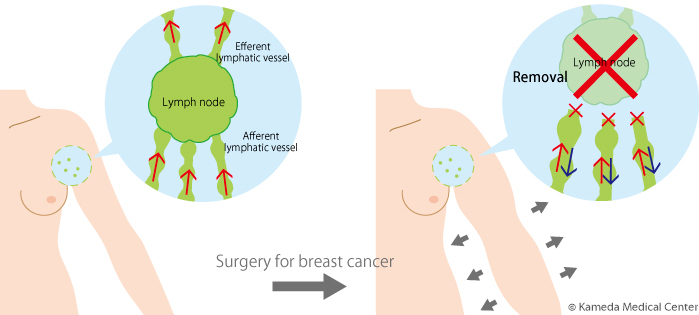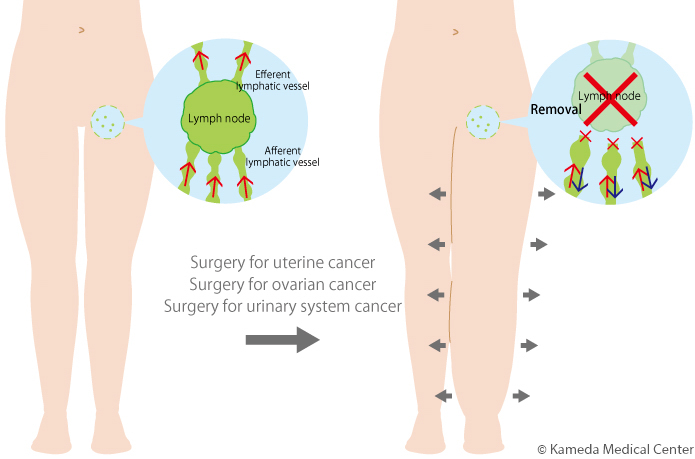2.How does lymphedema occur?
Lymphedema is classified into the two types based on conditions or causes. One is idiopathic lymphedema of unknown cause including congenital lymphedema. The other is secondary lymphedema of known causes such as secondary disease or surgery or radiotherapy for cancer or trauma treatment.
This lecture explains secondary lymphedema after cancer treatment that most frequently occurs among the cases of lymphedema.
In surgery for cancers including breast cancer, uterus cancer, or ovarian cancer, lymphadenectomy is performed (the lymph nodes near the lesion are removed) based on the result of preoperative examination and the perioperative findings, considering metastasis of cancer. In this case, because the lymph nodes in which many lymphatic vessels gather are removed, lymph flow (lymph fluid flowing in lymphatic vessels) is stagnated, leading to edema. Furthermore, the lymph return function decreases and the lumen (diameter) of the lymphatic vessels is further obstructed and disappears, resulting in deterioration and edema.


According to a report, edema occurs in about 10% to 20% of the patients whose lymph nodes were removed in the surgery of breast cancer and in about 30% to 35% of the patients with gynecological diseases whose lymph nodes were removed in the surgery. In addition to that, additional radiotherapy or specific chemotherapy may increase the incidence of edema.
There are two important points about the onset of edema.
- The timing of the onset varies with each individual.
- Even if extremities do not thicken, lymphedema has already occurred in most cases.
Although edema may occur immediately after surgery, it may not occur until 10 or 20 years after surgery. Therefore, the timing of the onset of edema varies substantially between individuals. Also, symptoms of lymphedema vary considerably between individuals. If the bilateral difference of thickness in extremities is found, lymphedema may relatively be worsened. Therefore, it is important to understand how lymphedema progresses.
The next column explains progress of lymphedema.